Pictured above (circa 1890) is the fishing boat Chance - registration KY 21, which was owned by Andrew Bisset. Andrew was born in 1854 to weaver John Bisset and his wife Paterson Reedie (a former flax spinner). In 1871, a teenage Andrew was working as a linen weaver, like his father and so many other people of all ages in the parish at the time. However, handloom weaving was on the wane, and, by the 1881 census, both Andrew and his younger brother John had become fishermen. [In later years, Andrew's brother, John Bisset, went on to own Downfield and manage the colliery at Teasses.]
One of the regular trips for Largo fishermen in the 1870s and 1880s was Stonehaven (see 30 July 1879 Courier example below). And this was where Andrew met his wife Eleanor (Helen) Taylor. The pair married on 30 December 1882 at St James Episcopal Church in Stonehaven. Andrew was aged 27 and Helen was 24. On the marriage registration form, Andrew was described as a 'white fisher' and Eleanor as a "fish cleaner". Both the bride and groom's fathers were also described as white fishers.
In the 1881 census many women in Stonehaven had an occupation of fish cleaner, fish worker or similar, including Helen and her two sisters. These 'herring lassies' (pictured below) had an important role in the fishing community. Once caught, fish had to be quickly gutted and packed. Some women travelled from port to port, while others stayed at their home harbour. They famously wrapped their fingers in bandages or 'cloots' (often made from flour bags) as protection against cuts from the gutting knife.
Through the fishing season, the hard physical work would be punctuated with social gatherings. Many herring lasses met their future husbands at such events. And for some it would result in relocation to the home town or village of the visiting fisherman. Helen would live out the rest of her life in Largo. By 1891, the couple had four children and were living on Main Street Lower Largo. Perhaps it was around this time that Andrew was able to purchase his own boat. In all Andrew and Helen would have eight children, although two died very young. They were Janet (born 1885), John (1886), David (1888), Andrew (1890), Agnes (1892), Eleanor (1894), Robina (1897) and James (1900).
The Chance is mentioned in the above 6 December 1889 East of Fife Record, having returned from Yarmouth with fellow Largo vessels Ocean Bride and Jane and Minnie. In December 1894, Chance was sold to Charles Criggie of Gourdon and registered at Montrose as ME127. She was broken up six years later in 1900. At the time of the 1901 census, Andrew Bisset was still a fisherman but these were the last days for many of the Largo deep-sea fishing vessels. By the 1911 census, Andrew's occupation had changed to labourer and the family were living at the Temple (in one of the now-demolished Burnside cottages). The two sons living at home were a labourer and a house painter. By 1915, the Bissets had moved to Burnbrae Terrace, pictured below, where Andrew and Helen would remain for rest of their lives.
Andrew and Helen's son Andrew, who had been an apprentice house painter with John Adam of Lundin Links, had emigrated down under in 1912. During the First World War, he had joined the Australian Infantry. As part of the 56th Infantry Battalion, he was sent to Europe. In August 1917, he visited his parents in Largo for a few days. However, just weeks later, he was killed in action. He died on 17 October aged 27 and is commemorated on the Menin Gate war memorial in Ypres as well as on the Largo War Memorial.
Eleanor (Helen) Bisset died nine days after her son, on 26 October 1917, aged 59, at Burnside Terrace. It seems that she would not have been aware of her son's death, as news of this did not appear in local press until 15 November (see Leven Advertiser below). Andrew Bisset senior survived his wife by over 15 years. He died at Burnbrae Terrace on 26 January 1933, aged 79. On the registration of his death, he was described as a 'retired roadman' but in fact he had a range of occupations in his lifetime. Arguably, it was his time as a fishermen that had the biggest impact on his life and of course that of his wife.
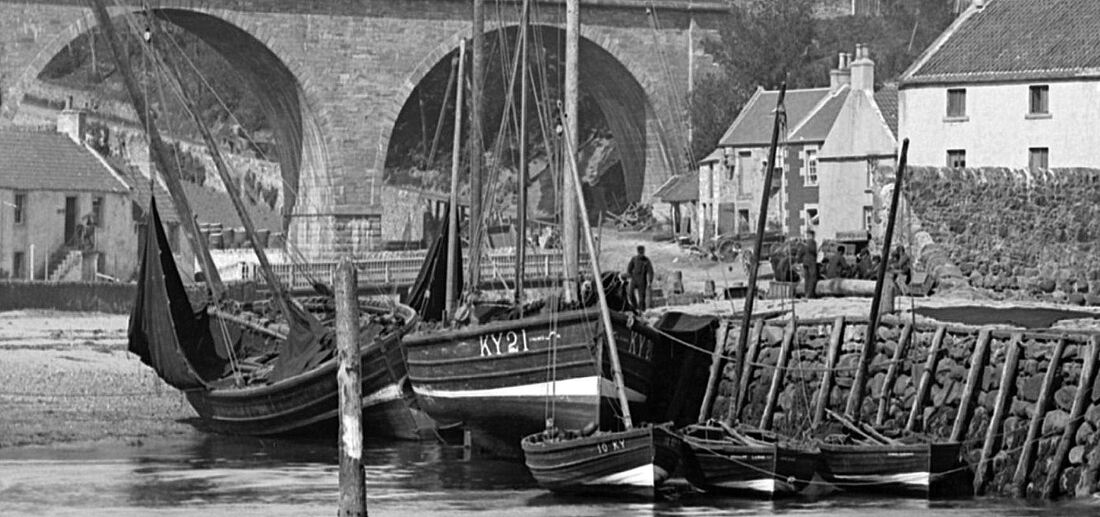
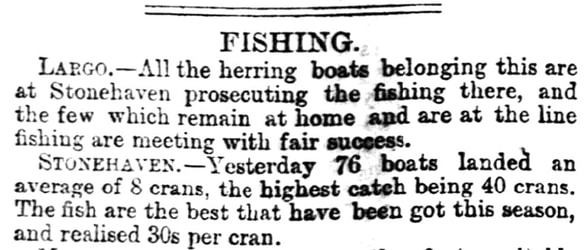
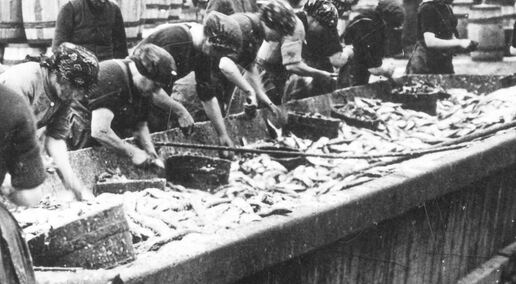
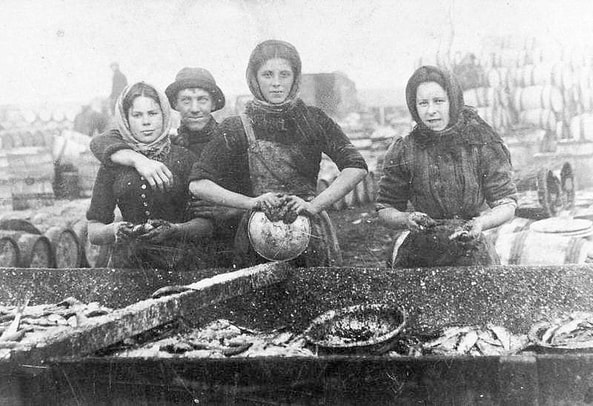
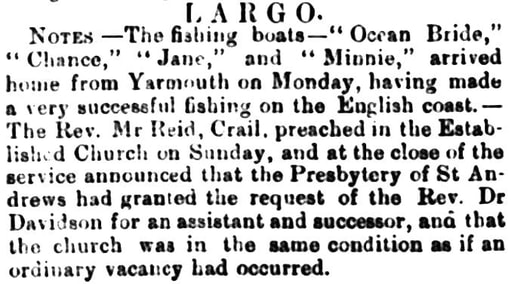
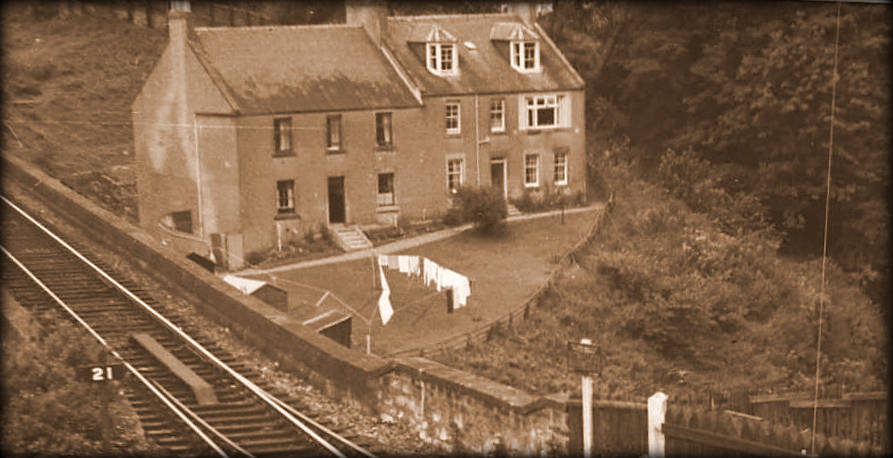
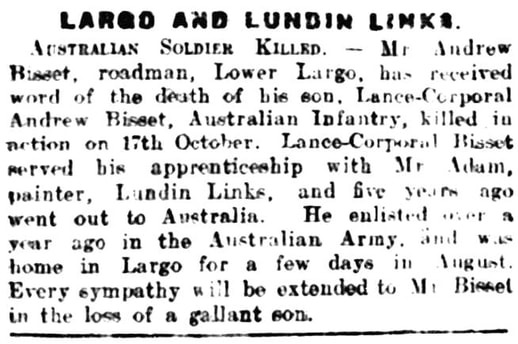
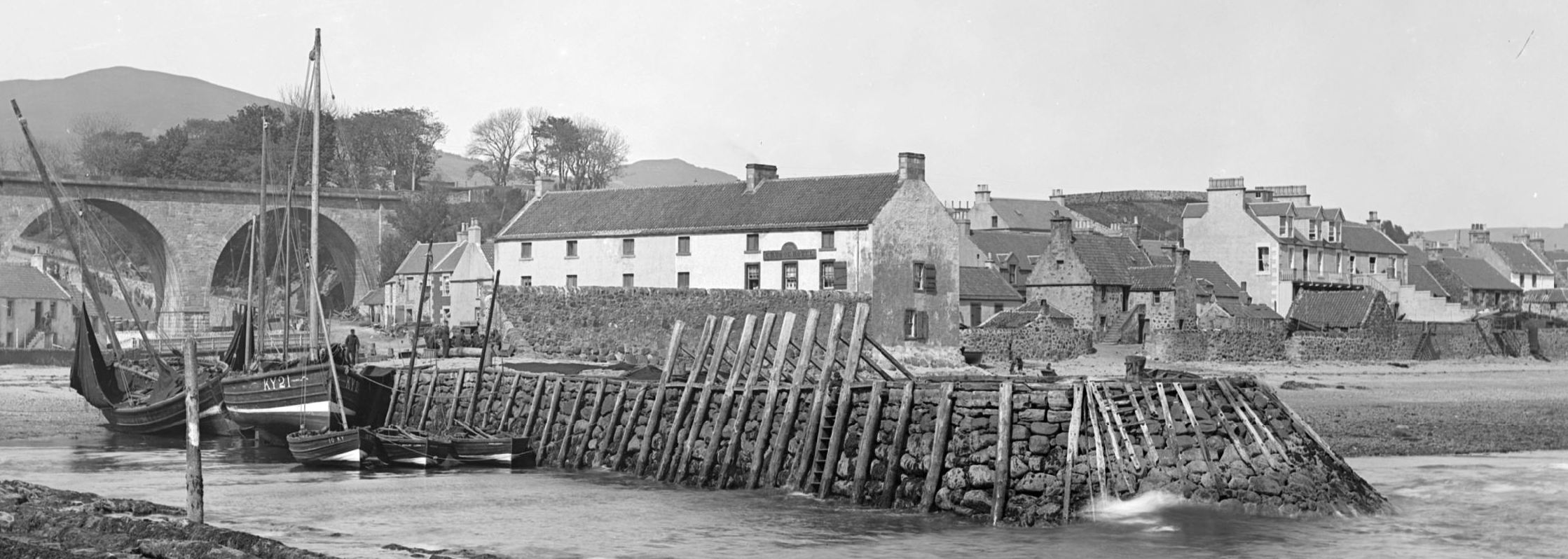
 RSS Feed
RSS Feed
